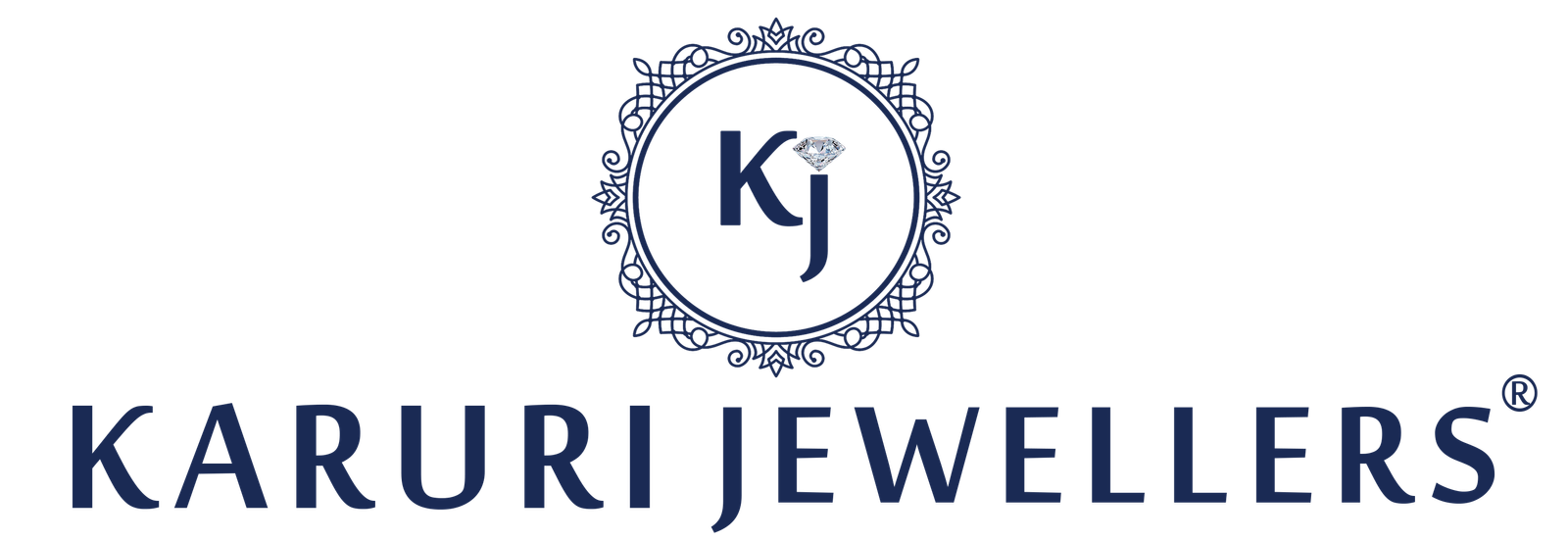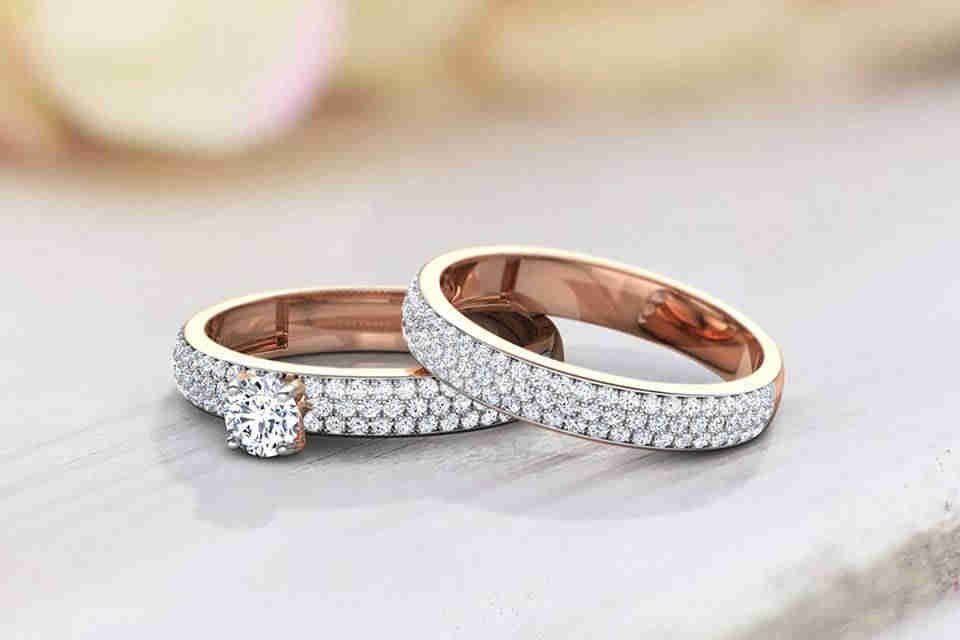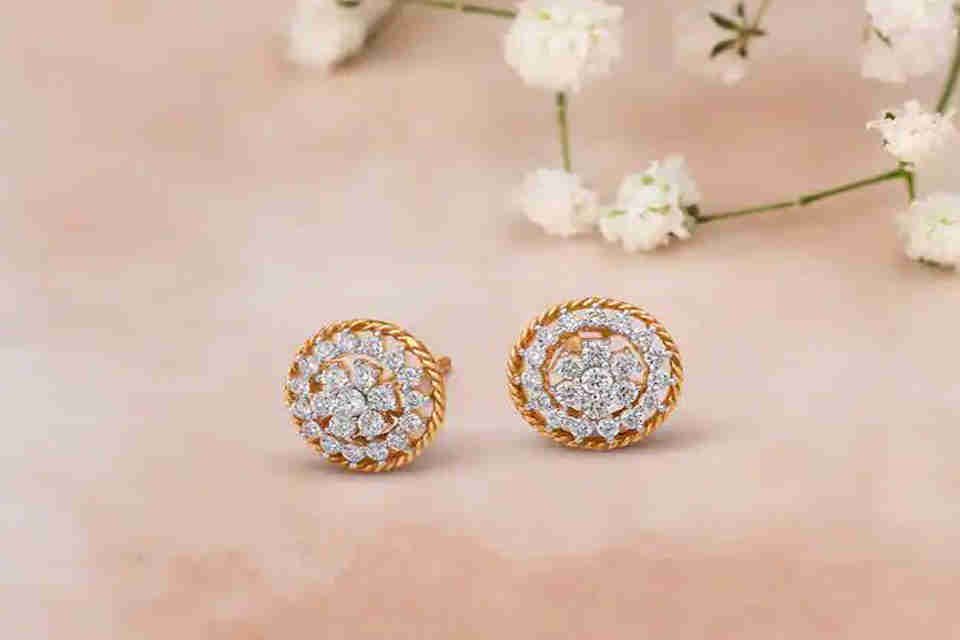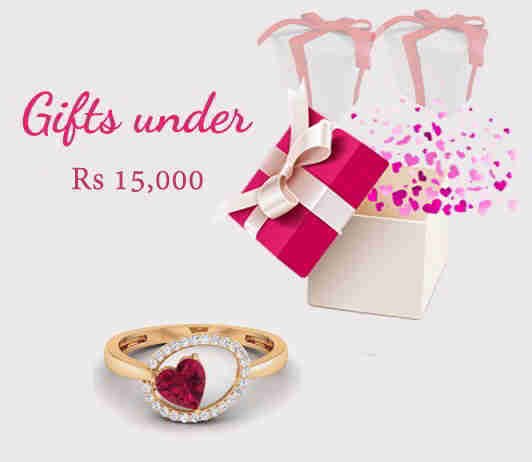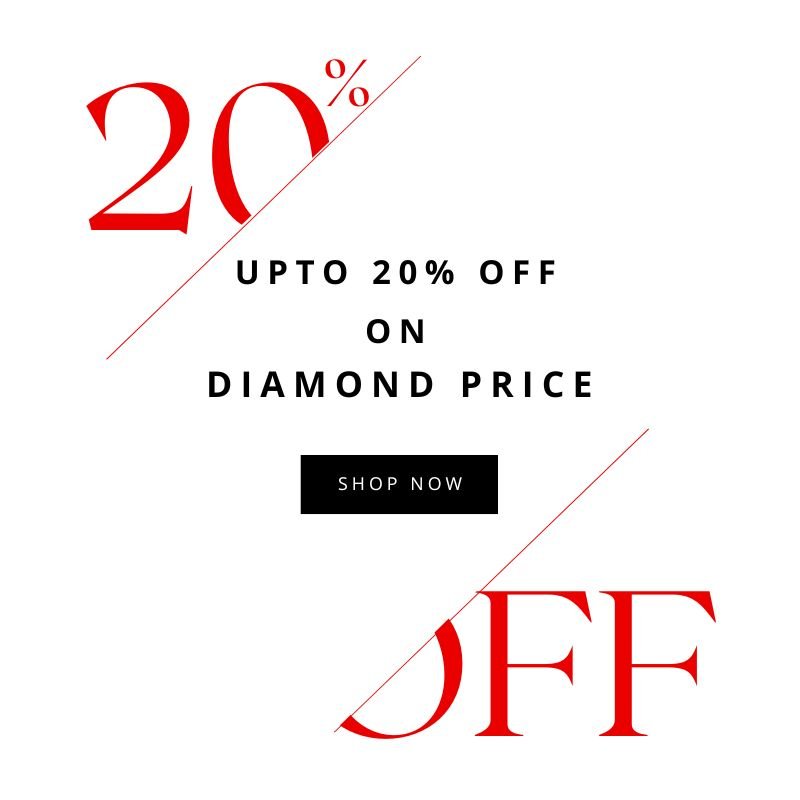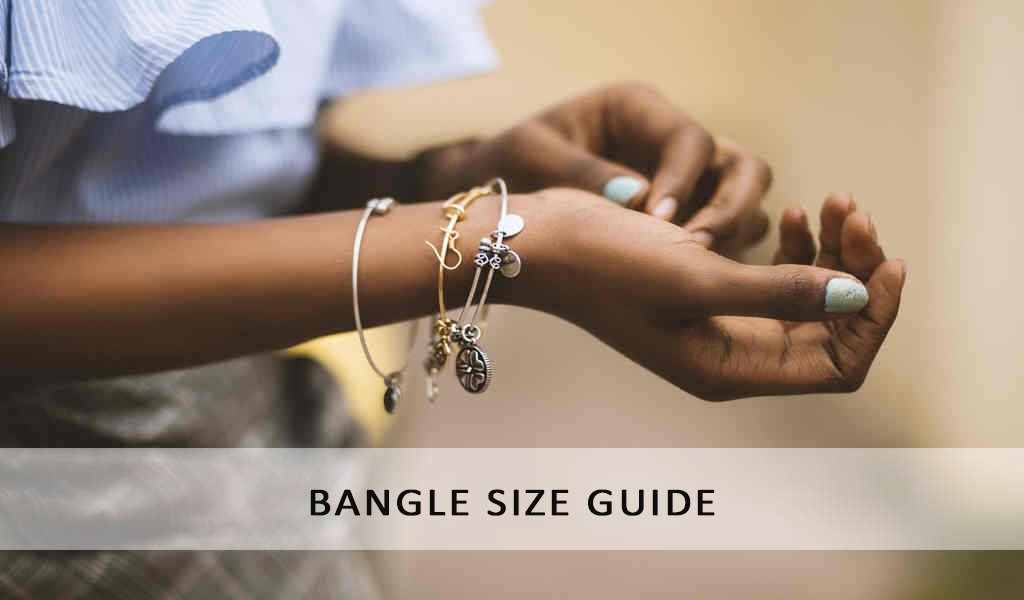Diamond Cuts and Shape

Diamond Cuts and Shape
When you buy a diamond ring, the first thing you would notice is
probably the size of the diamond. This is known as the stone’s carat weight.
However, this is not the only factor to be considered when you buy diamond
jewellery. There are 4 Cs that determine the value of a diamond, namely carat,
cut, color and clarity. Of these, the cut is often considered the most
important one, because it can impact the look, brilliance, and fire of a
diamond.
The cut of a diamond actually refers to its proportions. A diamond’s beauty depends more on how it is cut rather than its color or the clarity of the stone. It is better to buy a well-cut, small diamond than a badly cut, larger diamond. This article talks about everything you should know about diamond cuts – what it is, how are diamonds cut, different types of cuts, buying tips, and much more.
Cut Vs. Uncut Diamonds
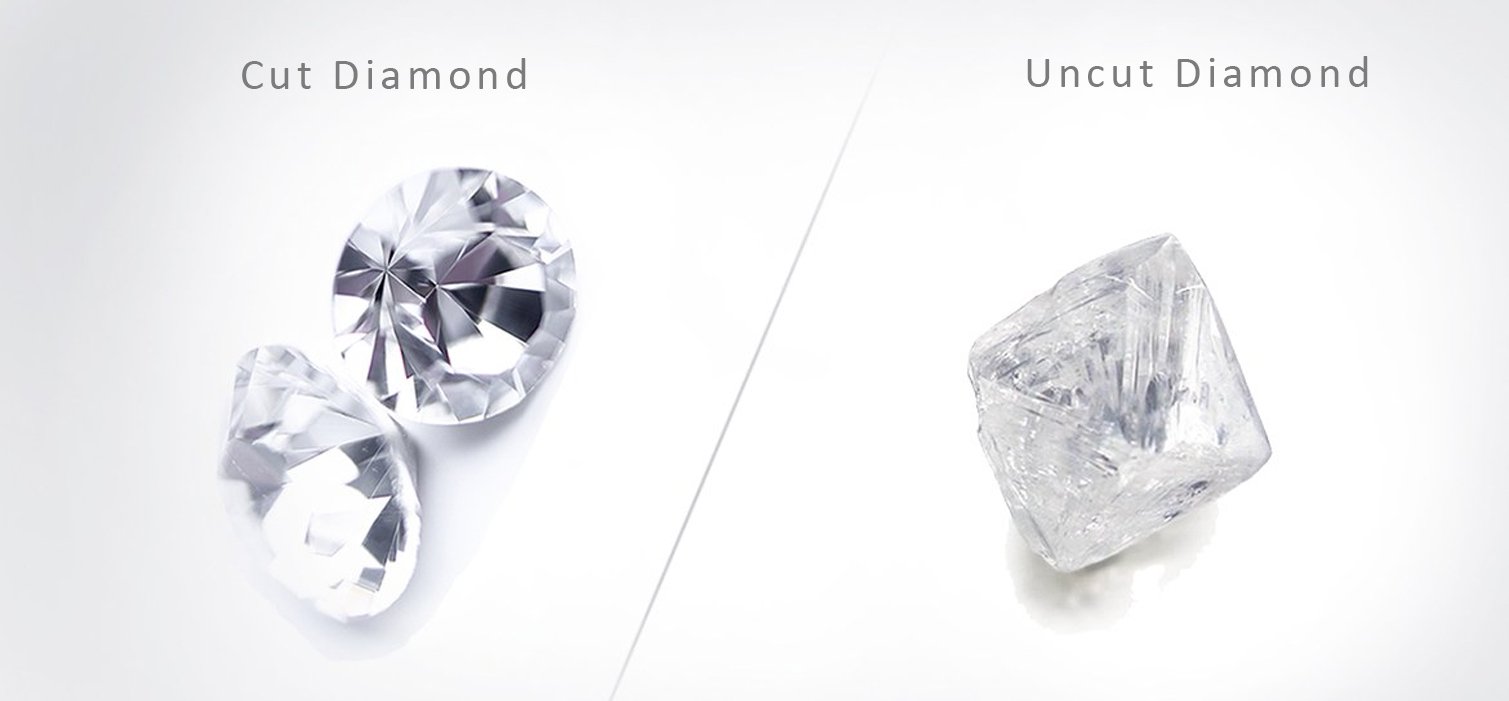
A raw, uncut diamond looks very different from the diamonds used on your diamond rings or bracelets. Uncut diamonds look like transparent or translucent crystals. These may be colorless or tinged in a brownish or yellowish color. The edges of a raw diamond can be rounded or angular. Uncut diamonds have a unique beauty of their own but they are rarely used in this form. Though they are cheaper, these diamonds appear dull and do not sparkle like cut diamonds.
What is the Best way to cut a Diamond?
One rough diamond can be cut in various different ways. It may be cut
into a large diamond or several smaller diamonds depending on the shape of the
rough stone. The way it is cut will affect the way light reflects off its
surfaces, the flashes of color that are seen through it, and how it sparkles.
To determine the best way to cut a diamond, there are two aspects to be kept in
mind - the proportions of the diamond and its shape.
Diamond Proportions
The proportions of a diamond refer to the relationship between its
shape, size, and angles of each facet. If the diamond is too shallow, the light
entering it will escape through the bottom. Thus, the sparkle of such a diamond
will minimized. Similarly, if the diamond is too deep, light falling on the
face of the diamond will not bounce back. This can make it appear dull and
smaller than its carat weight. Thus, if a rough diamond was oblong in shape, it
may be better to cut it into two small diamonds instead of one deep diamond.
The Other aspects of a diamond’s proportions include its table size,
girdle thickness, crown and pavilion angle, and culet. When speaking of
proportions, it is also important to understand a diamond’s depth% and table%.
Depth% can be arrived at by dividing the depth of a diamond with its total
width. When comparing two diamonds of the same carat value, the one with the
lower depth% will appear larger. Table% can be calculated by dividing the width
of the table facet with the width of the entire diamond.
Shape of a Diamond
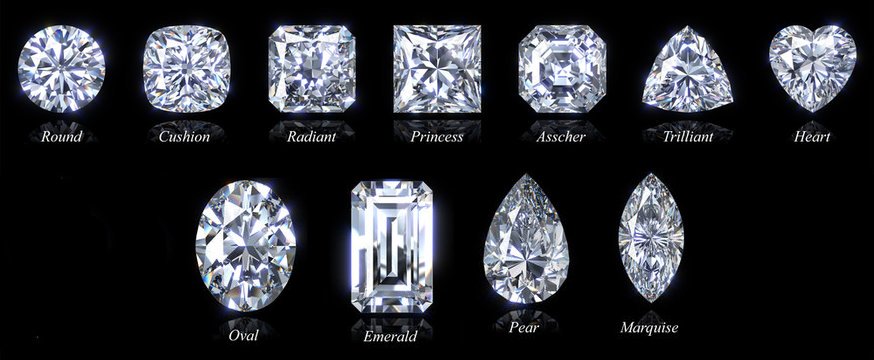
The contours of the rough diamond also determine the best shape for it.
There are many different shapes that a diamond can be cut into. Each shape not
only affects the way it looks but also affects its sparkle and fire. Some
shapes can also affect the perceived value of a diamond by making it look
bigger than it actually is.
What are the most common diamond cuts?
While buying diamond necklaces, earrings, bangles, and other types of
ornaments, their shape is usually the first filter. Though shape and cut are
technically different terms, they are often used interchangeably by laymen. The
ten basic shapes or cuts that you may choose between are:
Round: It is the most popular shape of diamonds for rings and solitaire earrings. A round cut diamond maximizes brilliance and luster. This classic shape is timeless and very versatile.
Princess: Traditionally, a princess cut referred to a diamond cut in the shape of a square. It features sharp, pointed corners and can have anywhere between 40 to 144 facets. Today, rectangular diamonds can also be given a princess cut.
Oval: This oval cut is considered a
modification of the round cut. It offers a similar brilliance and sparkle. Oval
diamonds are usually flanked by other stones. When it comes to rings, this cut
is preferred by people with short hands as it creates an illusion of longer
fingers.
Marquise: This cut is named after the Marquise
de Pompadour. It can be described as an oval with pointed ends. This unique cut
is considered one of the most dramatic cuts for a diamond. This shape makes the
diamond look bigger than its carat value.
Pear: The pear shape combines the contours
of the round cut and the marquise cut. When buying a pear cut diamond, it is
good to look for symmetry. Just like the oval cut, when set in rings, a
pear-shaped diamond also gives the illusion of a slender hand.
Emerald: An emerald cut diamond speaks of
glamour and opulence. This cut features a rectangular shape. A large table and
step cut facets. The large table accentuates the diamond’s color and makes
inclusions more apparent. From Beyoncé to Elizabeth Taylor, this emerald cut is
an all-time favourite.
Cushion: This is also known as the pillow cut.
Cushion cut diamonds may be square or rectangular. They are known for the
rounded corners and large facets. This makes the diamonds appear brighter. A
cushion cut is normally limited to higher carat weight diamonds.
Radiant: It is a combination of the emerald
cut and the round cut. Radiant cut diamonds are usually square. Its trimmed
corners are inspired by the emerald cut while the facets reflect a round cut.
This is one of the rarest cuts.
Asscher: This cut is easily confused with the
emerald cut except that it is square. The resulting look is dramatic and
attention-grabbing. The Asscher cut has a chunky profile, stepped facets and
clipped corners. The cut was created in the early 1900s and is very popular amongst
people who like vintage style.
Heart: The heart cut speaks of romance and
sentimentality. As the name suggests, a stone is cut in the shape of a heart
for this cut. This cut is difficult to perfect and hence, its demands a higher
price and is usually limited to stones with a high carat value.
Trillion: It is triangular in shape and it
often has rounded edges. The trillion cut, also known by other names as the
Trilliant, has a unique charm compared to other cuts. Triangle-shaped diamonds
are used as both central stones and accent stones.
How is the Cut of a Diamond Graded?
The cut of a diamond can be graded as poor, fair, good, very good and
excellent. This takes into consideration the shape, facets, angles, symmetry,
culet size, and polish. Poor-cut diamonds appear dull and do not have any
sparkle. While on the other hand, diamonds that are graded as an excellent cut
reflect nearly all the light that falls on them. Thus, they sparkle
brilliantly. Very good diamonds appear similar to excellent cut diamond under
normal lighting. When two diamonds of the same grade are being compared,
individual components such as their depth%, table%, symmetry, culet size, etc.
may be used as tiebreakers.
Things to Consider When You Buy Diamond Jewellery
When you buy diamond jewellery, always pay attention to the cut because
it can make a lot of difference to its appeal. For instance, if you want your
diamond to sparkle at the optimal level, a round brilliant cut is always the
best option. The emerald cut stone, on the other hand, will have an understated
sparkle. Likewise, when you want more value for the money, go for a cut that
makes the stone appear larger than it is. Marquise or oval cut diamonds are
your best options in this regard. While looking for unique appeal and charm,
you can count on the trillion cut or any fancy cut diamonds.
So, now you know what to
look for when you buy diamonds next time, don’t you? Make an informed decision
and cherish your diamonds forever. After all, diamonds are forever!

